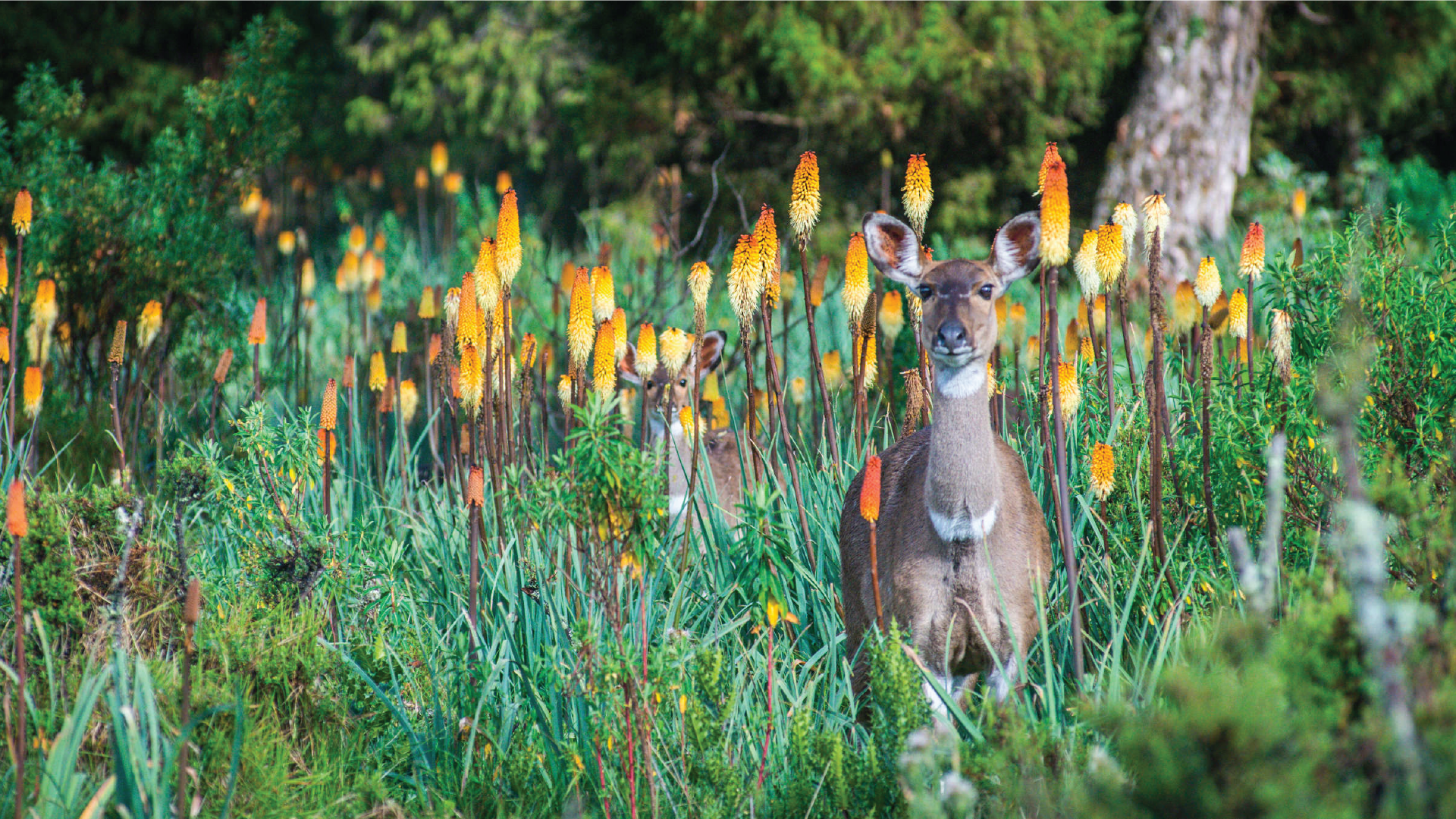Eastern Ethiopia is a land of astonishing geographic extremes. In the far northeast, the austere lavas capes and salt-flats plunges to 116m below sea level in the Danakil. Further south, the Bale Mountains rise to above 4,300m and support a wealth of highland wildlife including Ethiopian wolves and mountain nyala. Tempering these climatic extremes, are lush well-watered mid-altitude slopes swathed in lovely crater lakes, unexplored montane forests, Harenna Forest, and the historic city of Harar, the spiritual heart of the predominantly Muslim inhabitants of Ethiopia’s exotic east.
- The atmospheric walled citadel of Harar Jugol is the world’s fourth-holiest Islamic settlement and a UNESCO World Heritage Site. Its labyrinthine are lined with ancient Islamic mosques and shrines, bustling markets overhung with aromatic spices, and cafes brewing freshly-roasted coffee plucked from the surrounding hills.
. - Bale Mountain National Park, a spectacular hiking destination also explorable by road, is Ethiopia’s most important biodiversity hotspot, one of the top five birding sites in Africa thanks to its wealth of endemic, and the most important stronghold of the handsome Ethiopian wolf (the world’s most endangered canid).
. - Carved by the Web River, the labyrinthine Sof Omar Caves – which can be explored along an atmospheric foot trail – is an important pilgrimage site named after a revered sheik who took refuge there in the 12th century.
The spectacular Fentalle Crater and Awash Falls are scenic highlights of Awash National Park, which also offers outstanding dry-country birding and the chance to see the handsome Beisa oryx and Hamadryas baboon in the wild.
Getting There
Ethiopian Airlines flies between Addis Ababa and the eastern cities of Dire Dawa, Jijiga, Semera and the northern city of Mekele. It should also resume flights to Goba (for Bale Mountains National Park) when the airport there reopens. Most trunk roads through Eastern Ethiopia are asphalted, but many minor routes remain unsurfaced, as do many 4×4 tracks in the Danakil and various national parks.

